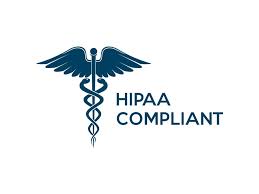HIPAA Compliant workflow automation

Healthcare processes involve a lot of applications, therefore there's a need to have a tool where these tools can be connected, integrated and perform scheduled tasks through automation.
Becoming HIPAA Compliant
Any automation tool deployed in the healthcare system must be HIPAA compliant. To become HIPAA compliant, the tool must adhere to the HIPAA rules of privacy, security and breach notification. This means that the tool must:
- Encrypt the personal health Information(PHI) of the individuals during electronic transactions
- Notify individuals of the privacy practices and how their PHI will be used and disclosed Create policies and procedures for identifying, reporting, and responding to breaches of unsecured PHI.
- Promptly notify affected individuals In case of a breach and report breaches to the HHS according to the specified guidelines and timeframes.
- Document the policies, and incidents and audit the workflow tool frequently
- Sign the Business Associate Agreement (BAA)
Healthcare workflow automation
The healthcare industry performs a lot of manual and repetitive tasks. Technology can be used to optimize these tasks. Also, the healthcare system is very sensitive in terms of data, therefore workflow tools adopted must adhere to the specified standards and regulations such as HIPAA, General Data Protection Regulation (GDPR), Personal Information Protection and Electronic Documents Act(PIPEDA), National Health Service (NHS), 21st Century Cures Act and so on. Below are some examples of healthcare workflow automation:
- Electronic Health Records Management (EHR) For EHR, third-party applications like voice recognition, fingerprint scanners and others can be integrated to collect patients' information and store it in the system’s database automatically.
- Lab test orders and results A workflow tool can automatically order lab tests and send the results to the patient’s online portal. Then notify the doctor or other healthcare provider about the results.
- Billing Based on the patient’s prescription, automated bills can be generated and sent to the patient using the workflow tool.
- Clinical decision support For cases of overdue or missed screening, tests or any other medical process, the patient and the healthcare providers can be alerted automatically using the workflow tool.
- Patient communication Scheduling of appointments, reminders, cancelling of appointments and other patient interactions can be automated using a workflow tool. This improves the access to medical attention to the patient. It also makes it easier for healthcare providers to follow up on patients and their medications. The goal of using healthcare workflow automation is for more secure and optimized processes.
HIPAA Compliant Tools
Activepieces
Activepieces is a workflow automation tool. It is open-source, secured and offers both cloud-hosting and on-prem. Its on-prem capabilities allow the user to own and manage the database and transfer data in its environment, also making it easier to comply with regulatory laws. Being HIPAA compliant, Activepieces ensures that the PHI of patients is encrypted. Activepieces is used to automate healthcare operations such as Electronic Health Recording, Scheduling of appointments and so on.
Workato
Another automation tool that is HIPAA compliant is Workato. Being an enterprise tool, Workato can automate business workflows including that of healthcare. As a signee of the BAA, Workato ensures the PHI of patients is safe and secured.
Keragon
Although a new kid in the block, Keragona is a healthcare automation tool that is also HIPAA compliant. It automates processes like data entry, appointment scheduling and so on. Its capabilities are currently limited.
Building an EHR workflow using Activepieces
Follow these steps to create your first EHR Workflow using Activepieces Trigger: A patient completes the registration form Actions: The data is extracted from the form, formatted based on the EHR’s system and updated on the patient's EHR profile by integrating an EHR existing application. Actions: A confirmation SMS is sent to the patient for receipt of their information, and next steps. Action: The healthcare provider is alerted of the new patient needing attention


